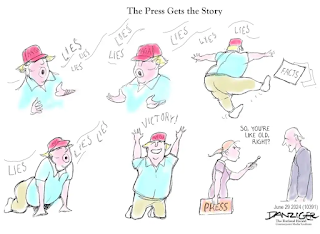The Religious Right aka Evangelicals are violently opposed to abortion. They want it outlawed with serious penalties for anyone having or supected of having an abortion, including miscarriages. At the same time they are opposed to policies that actually reduce abortions because they would be paid for by tax dollars. And because the life of the fetus isn't reaally the point. It is to punish women for enjoying teh same sexual freedom that men have always enjoyed. Women are simply to be baby machines at and for the pleasure of men. They love to say that the bible is opposed to abortion. Of course they really have to work hard to find some way for it to say that, because it isn't.
The Founding Fathers whom they worship like Lenin or Ataturk were not opposed.
They claim to be pro-life but the life of the woman is irrelevent.
A fertilized egg, an embryo, including one in a petri dish, or even a fetus is not a living human being.
 |
| In a heartbeat |
 |
| If it were about babies |
 |
| Pete Buttigieg on Late Term Abortions |
 |
| Eight cell embryo ready for IVF implantation |
 |
| From Mother Jones |
Note: Links are in bold

























































































